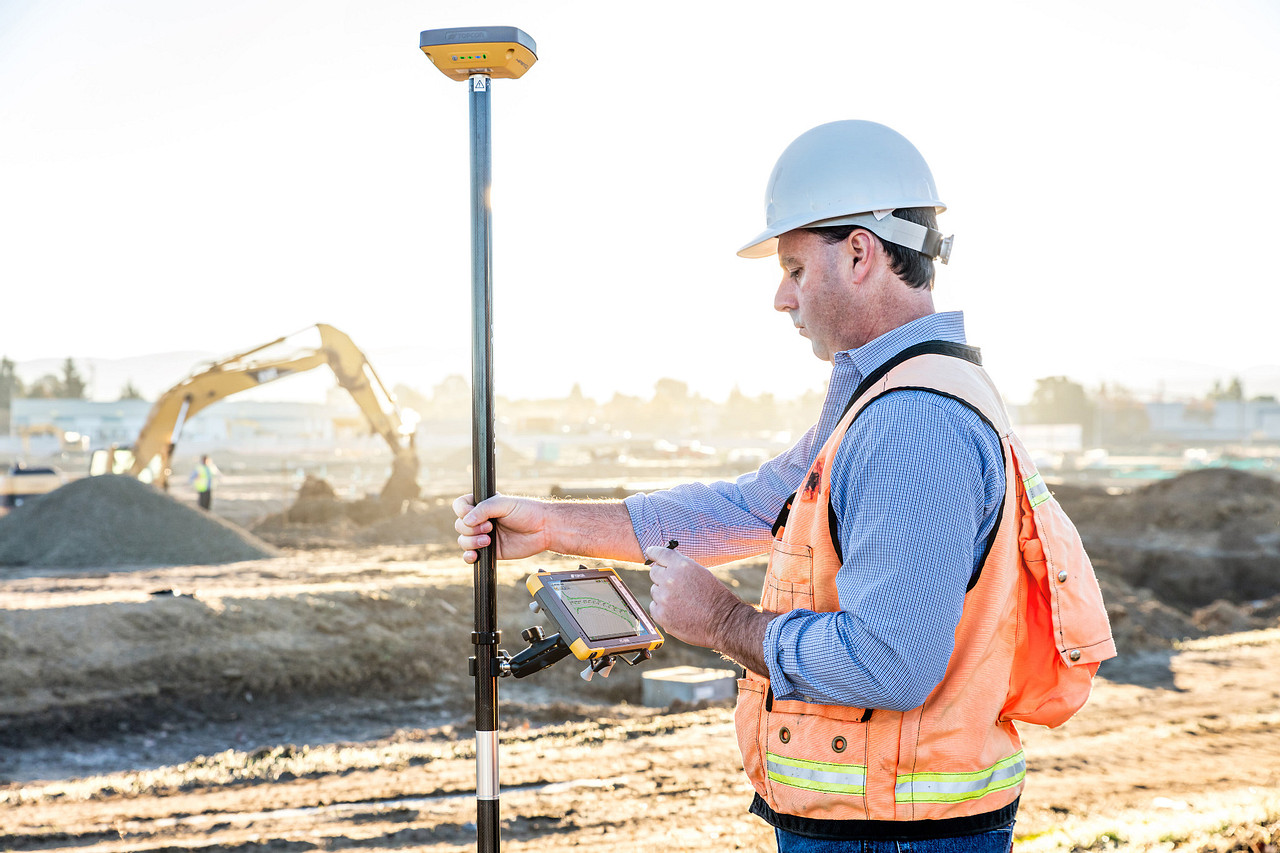The Government’s National Development Plan for 2030 has made specific provision for investment into the building of transport networks to drive economic growth and development in South Africa. In building more roads and bridges, surveyors will have to address a number of challenges in the field. Among these is the need for project accuracy, productivity and efficiency. WorldsView, with its range of Topcon products offers surveyors best-in-class instruments and support.
Topcon’s total stations and GNSS receivers offer a reliable solution. Built to deliver accuracy, intelligent data collection and seamless integration into surveying workflows, they make the building of roads and bridges more productive and efficient.
Greater range without compromising accuracy
The new OS-200 Topcon total station has an enhanced electronic distance measurement (EDM) that allows accurate measurements up to 800 m (without prism), or 6 000 m (with prism). Previous models offered 500 m and 4 000 m respectively.
Similarly, the Topcon HiperVR GNSS receiver has an impressive range of almost 20 km and its fence antennae technology makes measurements feasible even under tough conditions. It also compensates for common surveying challenges such as multi-path measurements, or measuring under trees. The TILT functionality and 30-degree range make it easier to take measurements in inaccessible spots. All constellations (and any available signal) can be tracked, which also improves measurement accuracy.
The HiperVR GNSS receiver can be integrated with construction machines using machine control (e.g. on graders/excavators) to achieve more accurate cut/fill measurements and ultimately, better road quality.
MAGNET on-board software for effortless workflow and improved productivity
Another benefit of Topcon instruments is the inclusion of MAGNET on-board software for smart on-site data collection.
Using the MAGNET enterprise cloud solution, surveyors can capture data and send it to the cloud while on-site and make it instantly accessible for review. This functionality negates the need for follow-up surveys in the event that initial survey data was incomplete. “The exchange of raw data between the field and the office is seamless. This provides the advantage of improved work quality, while roads and bridges are built more quickly. This is especially so if the road or bridge is being built in a remote area – the surveyor can avoid repeated trips to site because of the easy communication between the field and the office,” explains Sunnyboy Moyana, Engineering Surveyor and Technical Account Manager (Process, Energy and Mining) at WorldsView.
Data integration for better quality modelling
With the MAGNET software, data collected from different instruments can be integrated and calibrated to deliver a model with enhanced quality and greater detail. This also makes automation possible, to further increase accuracy and save time. “You could use a 3D scanner to create a point cloud model of a building and combine that with GNSS data of control points around the building. This creates a detailed point cloud model of the building that is also correctly georeferenced (as opposed to just having a model in the virtual space that isn’t referenced to a particular point on earth),” Moyana elaborates.
Moyana points out that the Topcon total stations and GNSS receivers work effectively in tandem. Using hybrid positioning of both instruments and integration of their data, measurement of otherwise obscure sites, becomes possible. The clever use of prisms allows for faster measurement from within a building through to its exterior. Additionally, with the application of robotics, some tasks can now be managed by a single surveyor, instead of a team.
Looking ahead, Topcon’s total stations and GNSS receivers will become useful tools in the creation of smart cities, where landmarks including roads and buildings are tagged in 3D with accurate information, including coordinates. “This is currently available in South Africa via Esri databases, for example. Surveyors and city planners can add information to the databases, which are an ever-growing source of real-world data. Combining topographical with geospatial information can aid in city planning and make for better decision making,” states Moyana.
“Roads and bridges make job opportunities, healthcare and education more easily accessible to more South Africans. WorldsView shares the vision of the Government’s National Development Plan, to improve the lives of South Africans through an investment into top quality, reliable and safe transport networks,” says Moyana.

